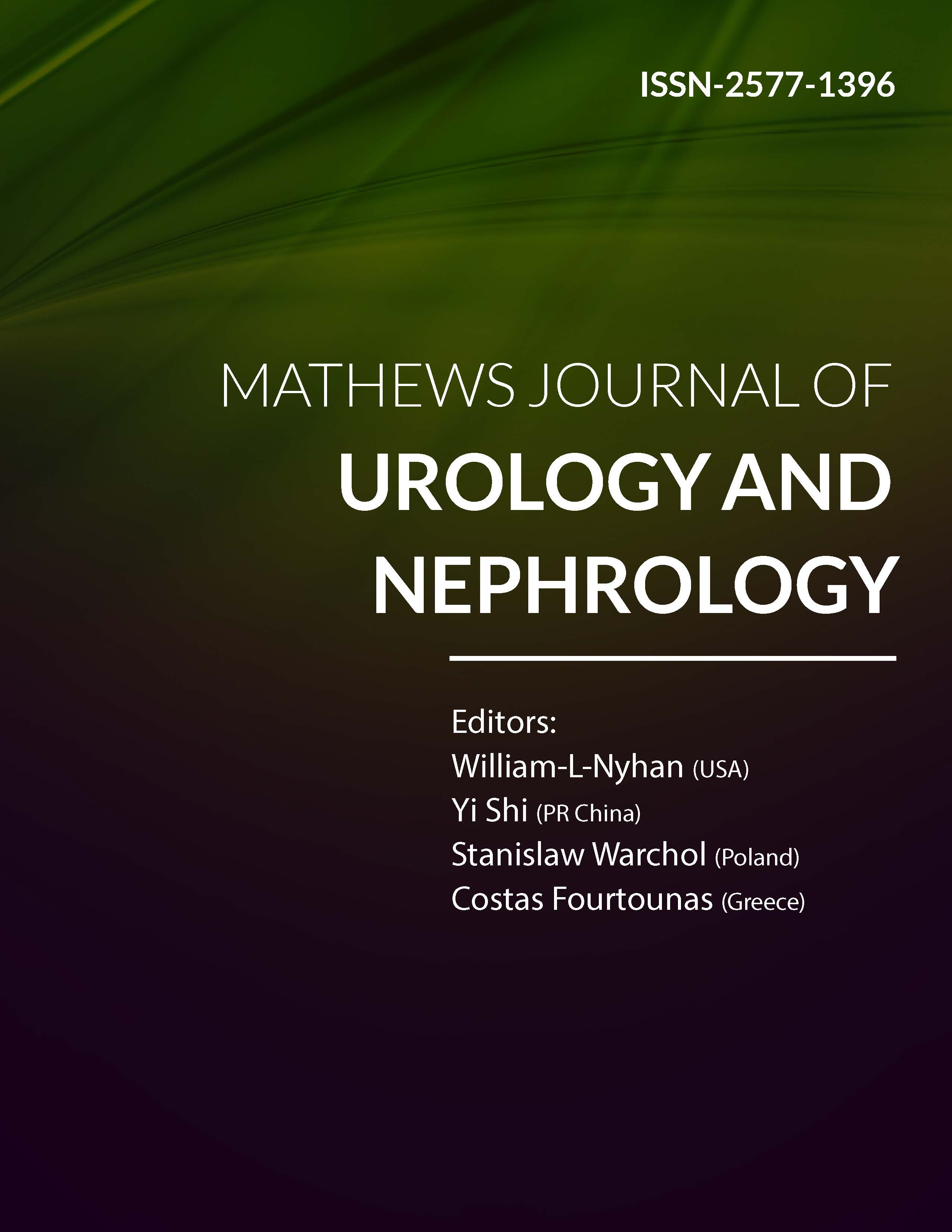
Information Links
Previous Issues Volume 6, Issue 2 - 2024
Intradiverticular Bladder Tumours Challenges and Outcomes: About 28 Cases
Doumer Abderrahmane1,2, Hannaoui Ali1,2,*, Moataz Amine1,2, Dakir Mohamed1,2, Debbagh Adil1,2, Aboutaieb Rachid1,2
1Department of Urology, CHU Ibn Rochd, Casablanca, Maroc
2Faculty of Medicine and Pharmacy, Hassan II University, Casablanca, Morocco
*Corresponding author: Hannaoui Ali, Department of Urology, CHU Ibn Rochd, Casablanca, Maroc and Faculty of Medicine and Pharmacy, Hassan II University, 13 rue Stéphane Mallarmé Residence Atlas imm A 1st Floor App 4 Val Fleur, Casablanca, Morocco, Phone: 00212661989515, E-mail: [email protected]
Received Date: April 14, 2024
Published Date: May 06, 2024
Citation: Abderrahmane D, et al. (2024). Intradiverticular Bladder Tumours Challenges and Outcomes: About 28 Cases. Mathews J Urol Nephrol. 6(2):20.
Copyrights: Abderrahmane D, et al. © (2024).
SUMMARY
Introduction: Bladder diverticula are urothelium herniations that pass through the bladder muscle. The perivesical fat is in direct contact with the urotheliumdiverticularis. As a result, tumours developing from the urotheliumdiverticularis have a distinct evolutionary history from classical bladder tumours and are rarely linked with a bad prognosis. Objective: to assess the management of intraverticular bladder tumours. Material and methods: This is a retrospective study on intradiverticular bladder tumours from January 2012 to December 2023. The study included all patients with an intradiverticular bladder tumour and a complete file. Results: The mean age was 63.75 years and the delay between the onset of symptoms and the consultation was 12.83 months. In all cases, hematuria was the most common symptom for consultation. Smoking (66.66 percent) and recurrent urethritis were identified as two risk factors. In 50% of patients, ultrasound revealed a diverticulum with tumour material, and CT scans revealed a tumorous diverticulum. Urothelial carcinoma was the most frequent histological type (83.33 percent), followed by squamous cell carcinoma. After surgery, the pT3 grade was the most prevalent. In three and nine cases, surgery was conservative and radical, respectively. After three years of follow-up, the majority of patients had a favourable outcome with no recurrence. Conclusion: Intraverticular bladder tumours exhibit differences from typical bladder tumors, notably presenting a higher frequency of T3a tumors and non-urothelial carcinomas. Additionally, there is a risk of misdiagnosed extension and tumor multifocality in IDBT cases. Unfortunately, the prognosis for the majority of these cases is poor.
Keywords: Diverticula, Cancer, Cystectomy, Urothelial Carcinoma, Prognosis, Survival